In April, I posted a review of C. Crane’s latest iteration of the much-loved EP series: the C. Crane CCRadio-EP Pro.
Although the new Pro model had the makings of a great, simple DXer-grade receiver, the first production run was plagued with issues that, in the end, prevented me from recommending it to radio enthusiasts and DXers. Frankly speaking, I was quite disappointed.
I evaluated the original CCRadio-EP Pro over the course of several weeks, documenting my findings in detail and sharing them with C. Crane both during the evaluation period and in my full review.
But to C. Crane’s credit––being a company of integrity––they responded to each point of criticism, promising to address the issues in the receiver’s second production run.
Enter the second production run…
About six weeks ago, I took delivery of a second-production-run CCRadio-EP Pro.
The second-run units have actually been shipping for a few months now, but due to nearly two months of travel and a hectic schedule following, my evaluation took longer than I had hoped. And if you’ve been following the SWLing Post for long, you’ll have noticed that I never rush a radio evaluation…and for good reason. Post readers are placing their trust in my review, so I must feel confident it’s as accurate––and as transparent––as I can make it.
Speaking of transparency, by the way, please note that C. Crane provided the initial and second production evaluation units at no cost to me.
What follows is a review of the second-run CCRadio-EP Pro. I would encourage you to read my original review before proceeding, because I am (only) addressing all of the negatives I listed from the previous review. However, for your convenience, I’ve included quotes from the original here.
In a nutshell? C. Crane listened to my list of concerns, and I’m very pleased!
Muting between frequencies?
From my first production run review:
[M]echanically-tuned DSP radios, like the new CCRadio-EP Pro, may look like analog sets, but inside, they’re entirely digital. And one drawback to all of the mechanically-tuned DSP radios I’ve tested so far is a tendency to mute between frequencies. With each 10 kHz frequency step, you’ll hear a short audio mute. If you tune across the dial quickly, audio mutes until you land on a frequency.
I’m pleased to report that C. Crane has significantly decreased the amount of muting between frequencies. Indeed, even on the AM band (which was most affected in the first production run), muting no longer distracts me from the experience of band scanning.
Unlike an analog receiver, if you tune quickly across the band, the EP Pro essentially mutes audio completely. This is common with analog-tuned DSP receivers. This is still the case with the second production run unit, but this does not concern me, as I rarely move quickly across the bands while hunting weak signals.
Imaging?
From my first production run review:
Crane actually includes a note about weak images which you might find below and/or above your target signal. Weak images are an unfortunate reality of the CCRadio-EP Pro; they’re prevalent on both AM and FM.
On the initial production receiver, here’s how you might experience the images by way of example: let’s say you’re tuning to a strong local AM station on 630 kHz, noting that the EP Pro has 10 kHz tuning increments. As you tune to 630 kHz, you’ll hear the station on 620 kHz, though it won’t be as strong as it is on 630 kHz. Then if you tune to 640 kHz, you’ll likely hear a weaker image of the station there, as well. In my experience, images are present on both sides of the target station if the station is strong. If it’s a weak station, you might only hear it, say, 10 kHz lower but not above (or vise versa).
As you might imagine, this poses a problem for the weak signal AM broadcast band DXer.
I’m pleased to report that C. Crane has eliminated the false peaks around signals. This was a major negative from the original review. Now, as you tune across the bands, it feels more fluid, and when you hear a station you can be confident you’re actually on frequency as it seamlessly “locks” into place.
Well done, C. Crane!
Inaccurate dial?
From the first production run review:
I’ve also discovered that, on my unit, the top half of the AM dial is inaccurate. I estimate that the slide rule dial is off by about 40-50 kHz at the top end of the band. It’s much more accurate below 1,200 kHz, however.
I’m pleased to report that the dial on this second production run unit is now as accurate as any analog radio. I tested frequency accuracy across the entire AM/FM bands, and can reliably find stations. Another major negative C. Crane fixed!
Audio “pop” with power on?
From the first production run review:
[A]ny time you turn on the CCRadio-EP Pro, you’ll hear an audio “pop.” This is happening when power is applied to the audio amplifier. The pop is not soft, but fairly audible, and is present even if you turn the volume down all the way. The audio pop is prevalent via both the internal speaker and when using headphones. Fortunately, it’s much less pronounced via headphones. While not a major negative, I find it a bit annoying, and don’t doubt that other listeners will, too.
C. Crane has managed to minimize–not eliminate–the audio pop. It’s much improved over the first production run unit. I think I would still make note of it in the “cons” section if this were my first review of the radio, but it’s truly a very minor complaint at this point.
AM frequency steps limited to 10 kHz?
From the first production run review:
My initial production run EP Pro is limited to 10 kHz frequency steps. This radio is primarily marketed to North America where 10 kHz increments are standard. Of course, if you’re trying to use the EP Pro to snag Transatlantic or Transpacific DX, you’ll miss the ability to tune between those broad 10 kHz steps. But, again, due to the imaging mention above, I think the CCRadio-EP Pro is simply not suited for DXing.
I’m pleased to report that C. Crane has added a switch that allows the listener to toggle between 9 and 10 kHz AM steps! This was an essential upgrade for those of us planning to use the CCRadio-EP Pro outside North America, or for those of us attempting to chase signals from across the ocean. Very nice, C. Crane!
Conclusion
To their credit, C. Crane has addressed all of the major negatives I listed in my review of the first production run units.
And as a result, I can now recommend the CCRadio-EP Pro with confidence.
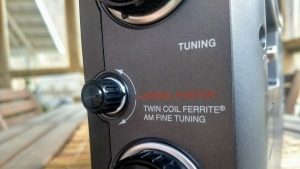 I should add that during the course of this evaluation, I spent some valuable time on the mediumwave/AM broadcast band and have been very impressed with the EP Pro’s sensitivity and selectivity. The AGC can cope with weak signals quite well; I noted none of the soft muting which plagues a number of other DSP receivers. And the Twin Coil Ferrite tuning can substantially improve reception of weak signals––don’t ignore that control on the right side of the radio! Very useful.
I should add that during the course of this evaluation, I spent some valuable time on the mediumwave/AM broadcast band and have been very impressed with the EP Pro’s sensitivity and selectivity. The AGC can cope with weak signals quite well; I noted none of the soft muting which plagues a number of other DSP receivers. And the Twin Coil Ferrite tuning can substantially improve reception of weak signals––don’t ignore that control on the right side of the radio! Very useful.
With renewed confidence in the EP Pro, when I have time this fall or winter, I plan to take it to the field and pit it against my beloved (and recently re-capped!) Panasonic RF-2200. I’m beginning to think it might be a real competitor. We will see.
I would encourage you to also check out Guy Atkins’ recent evaluation of the EP Pro. I’m in agreement with his assessment, which leads me to believe quality control is also consistent in the production run. Good news all around. I’m very happy that C. Crane fixed early production run issues with both the CCRadio-EP Pro and the CC Skywave SSB. Well done! I’m so glad C. Crane paid attention.
You can purchase the CCRadio-EP Pro from the following retailers:
- C. Crane $89.99 (plus shipping)
- Universal Radio $84.95 (plus shipping)
- Amazon.com $89.99 shipped (affiliate link)
How to identify a second (or later) production run unit
I know I’m going to receive emails and comments about how to tell if one has a first or second production EP Pro. The answer is very simple…
If your unit has a 9/10 kHz step switch on the back (see photo directly above) then you have a second production run unit or later.
While the first production run EP Pro will please most average radio listeners, I couldn’t recommend it for the level of radio enthusiast and DXer who spends time reading reviews on the SWLing Post.
If you plan to purchase the CCRadio-EP Pro this year, I would encourage you to check with the retailer to make sure you’re getting a unit from the second production run or later.
Do you enjoy the SWLing Post?
Please consider supporting us via Patreon or our Coffee Fund!
Your support makes articles like this one possible. Thank you!

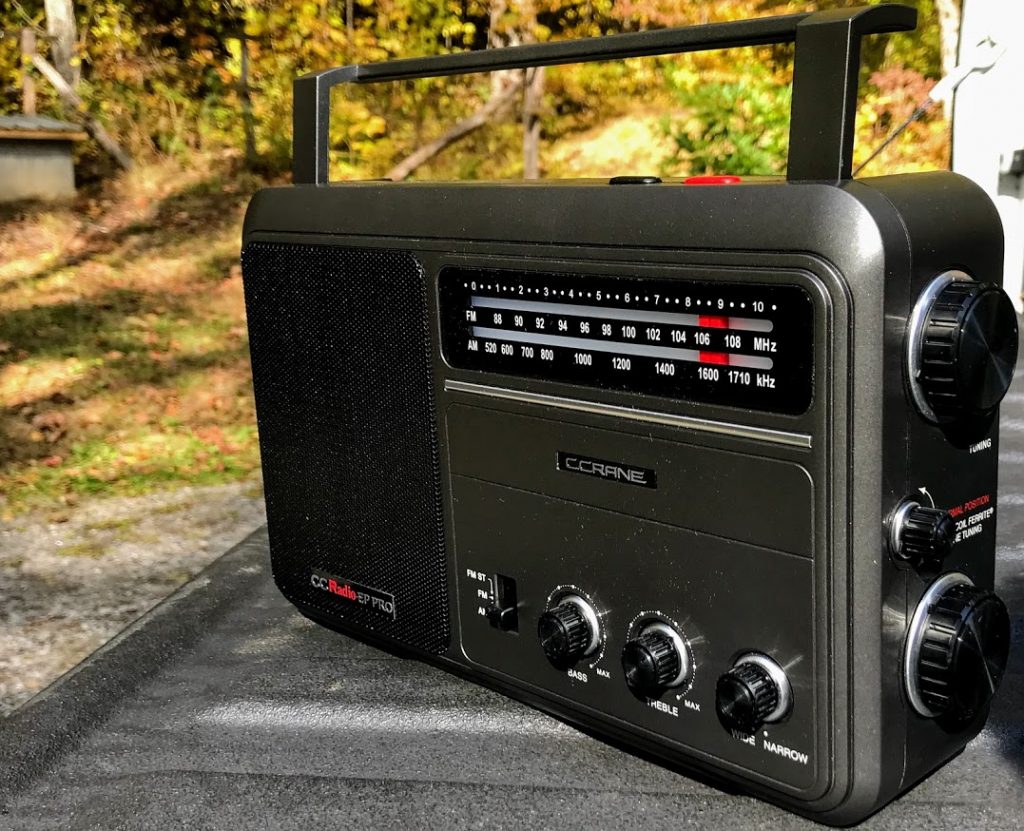
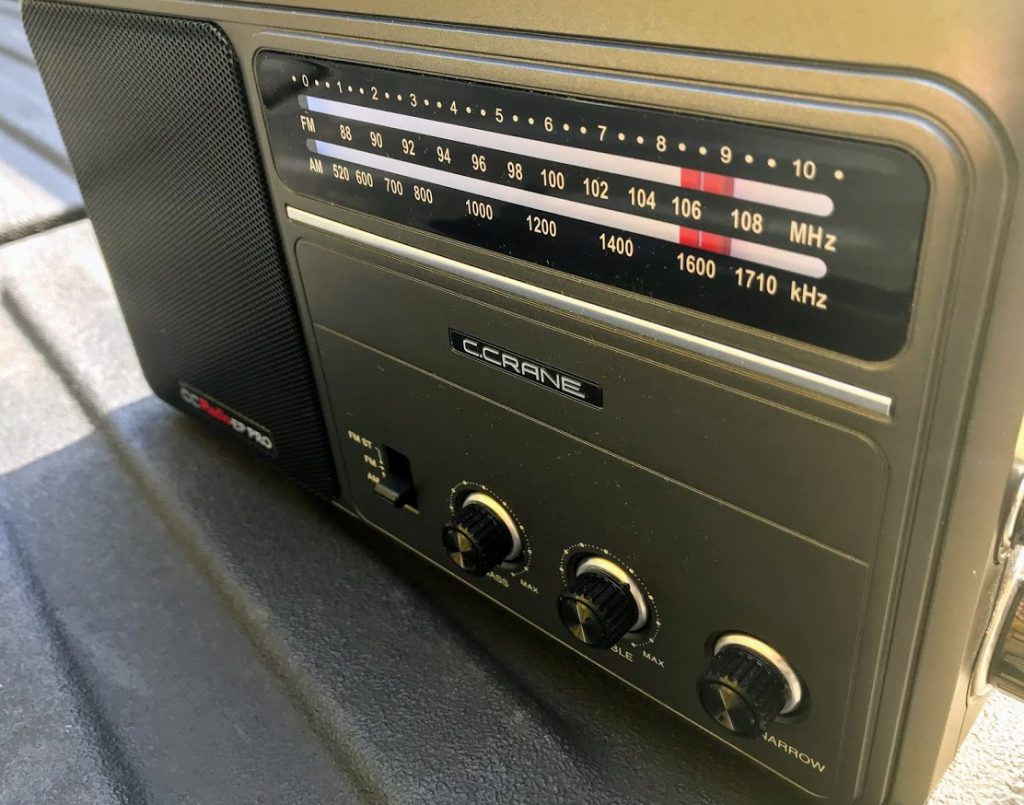
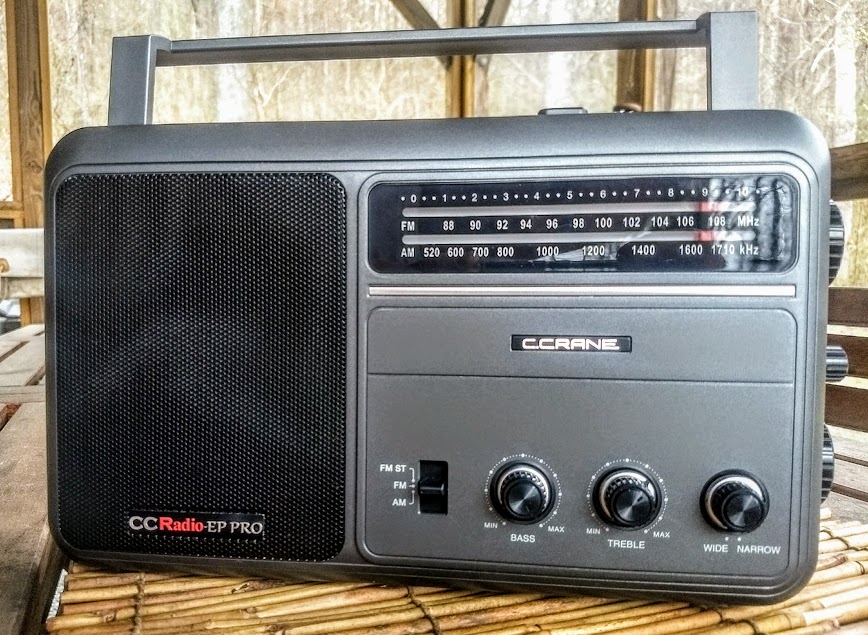
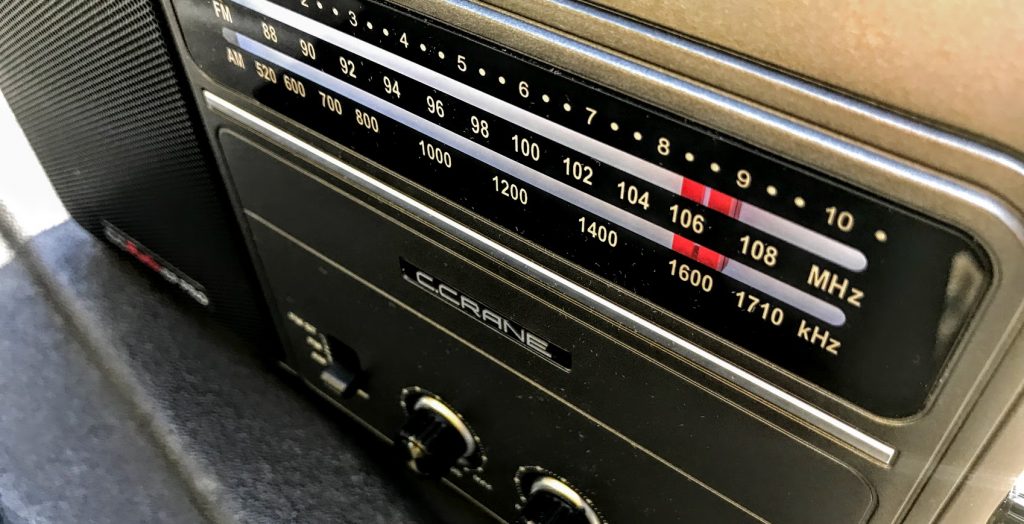
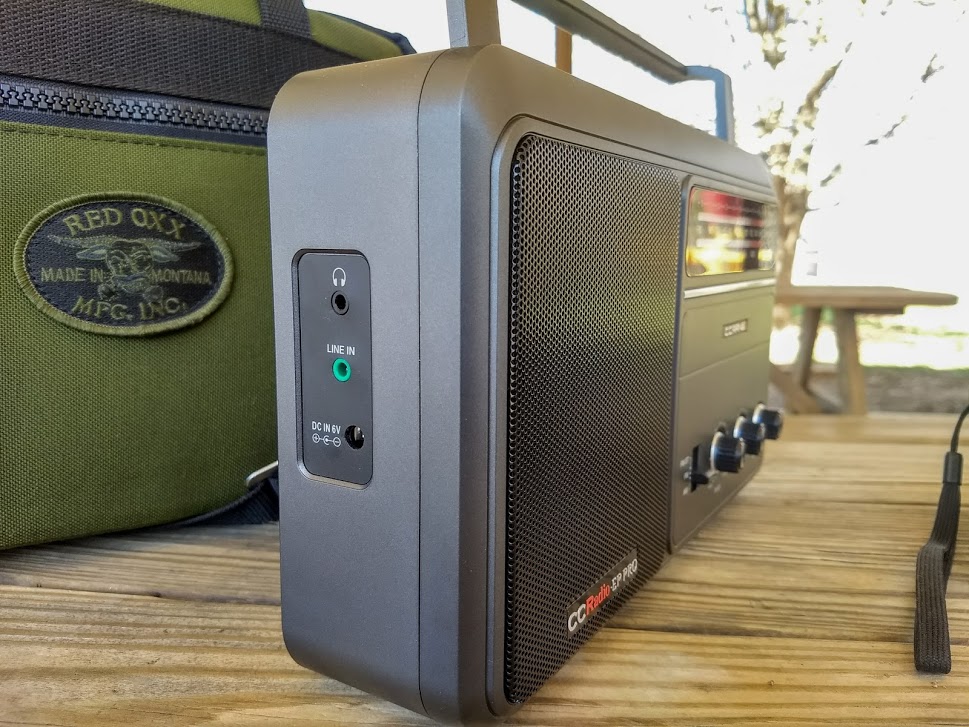
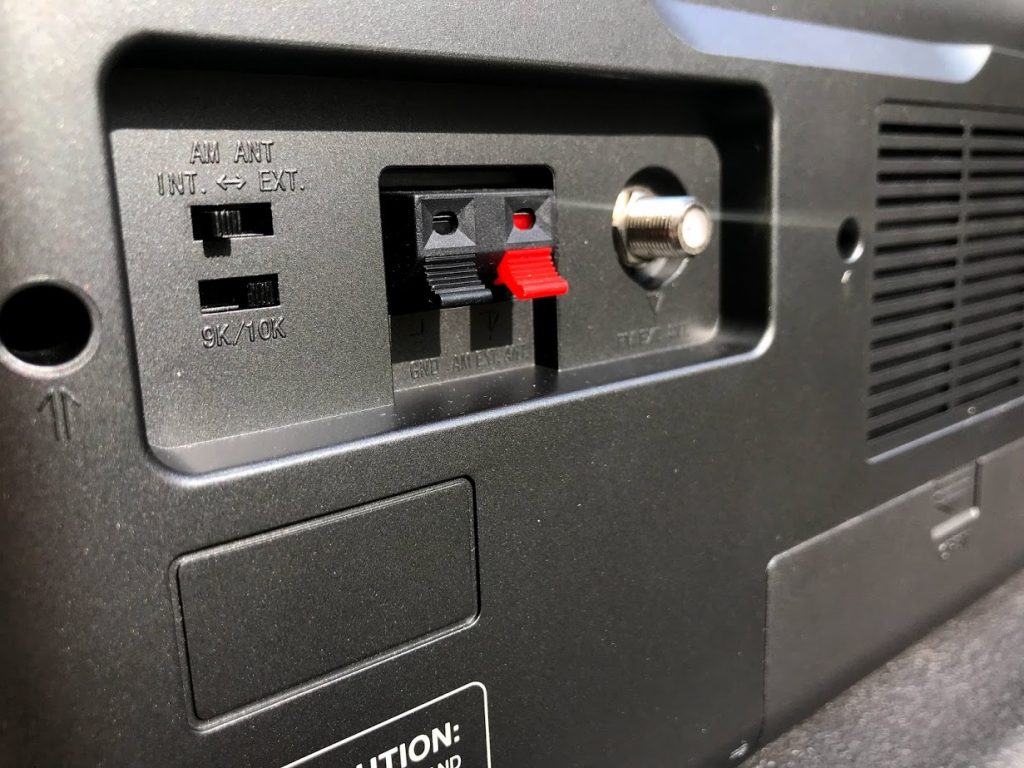
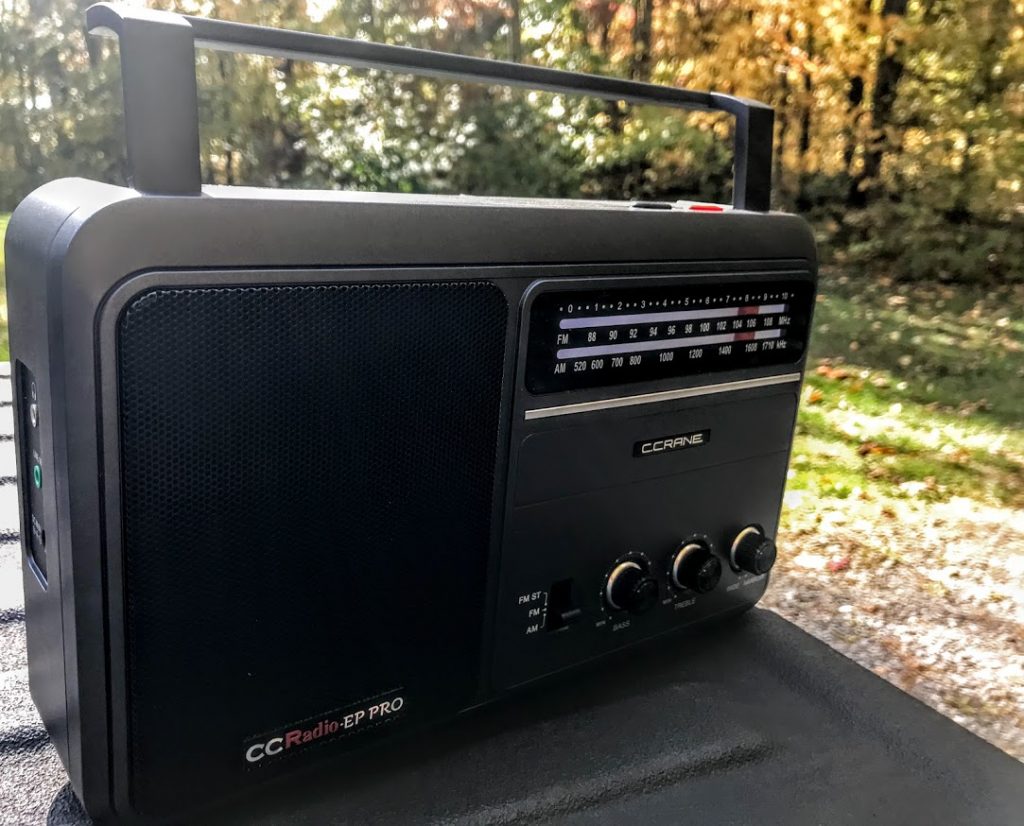
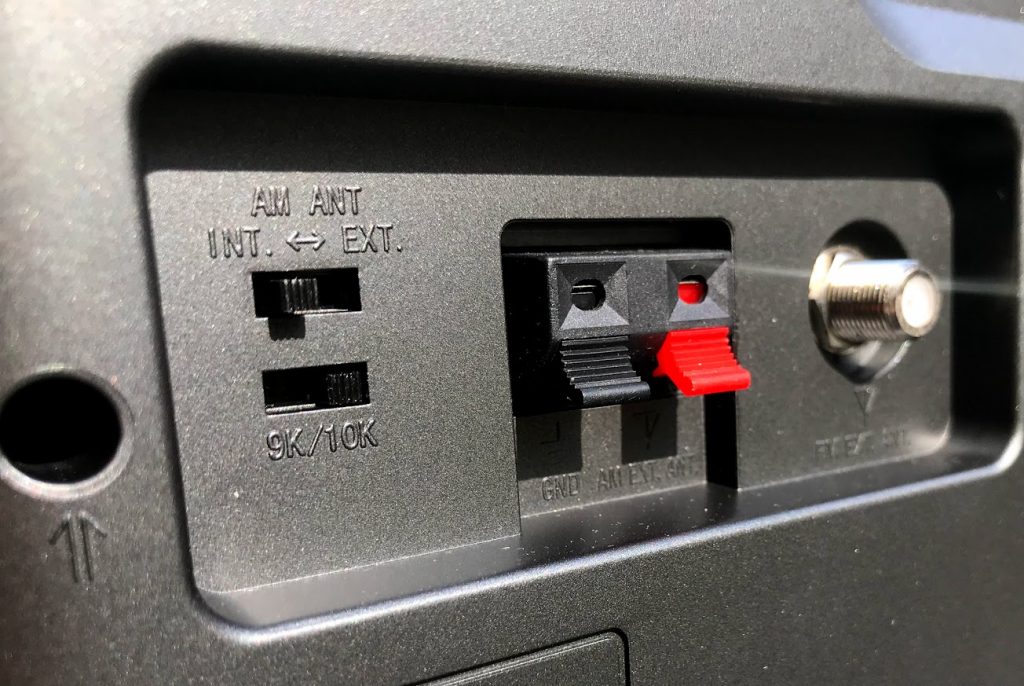

I just received a CCRadio-EP PRO from Amazon. $99.00 .
It has great reception on both FM and AM. The only thing that bugs me a little is I think the volume should be able to go up a little more. Both the speaker and headphone outputs seem to low at full volume. I’ve tested several different phones. Same thing. I can live with it.
Maybe C. Crane lowered the volume level because of the “POP” complaint?
KQ6FN
I have the previous version of the CC Radio, the EP, and while it has excellent sensitivity and good audio, it is extremely susceptible to overload from strong local signals. A 10KW station four miles away overloads the radio terribly making it difficult to receive weaker signals 90KHz on either side. Same with a 50KW transmitter about eight miles distant. Does the EP Pro have similar problems? I would like to know before ordering.
Thank you for writing this review follow up. My wife and I are young parents who love music and sports but want to greatly reduce the time we spend on our smart phones. We bought basic radios from walmart and target but ended up taking them back because they had poor reception (no metal antennas but a tiny rubber coated metal wire). Thank you for making this post, I ended up buying this radio and it’s much much better.
Hello Thomas , did you ever get to compare the newest version of the EP Pro with the RF 2200 or CC radio 3 yet ?
I can’t seem to find anything on it .
“With renewed confidence in the EP Pro, when I have time this fall or winter, I plan to take it to the field and pit it against my beloved (and recently re-capped!) Panasonic RF-2200. I’m beginning to think it might be a real competitor” We will see.
Thank you very much .
I just bought one of these from Bi-Mart this weekend. There were 4 boxes available on the shelf. One of them had a serial number starting with D, the other 3 had serial number starting with E (convenient that they put the serial number on the outside of the box!). I assumed that the later serial number would likely correspond to a later model.
One thing I noticed in the manual that I have not seen mentioned before is that the switch on the back that toggles between 10kHz and 9kHz for AM now ALSO toggles between 0.2MHz and 0.1MHz for FM! It does not say that on the radio, just in the manual. I just looked up what must be an older rev of the manual on line, and it does not include that feature.
I’m going to go back and see if that D serial number box is still there, and take a look at the directions and see what it says in that one.
And, FWIW, the “pop” is still there, but to me it is barely noticeable
“If you plan to purchase the CCRadio-EP Pro this year, I would encourage you to check with the retailer to make sure you’re getting a unit from the second production run or later.”
This year? What year is it? Nice reviews, but limited value, when you refude to date them.
But for some reason the comments are dated. Are you afraid you’ll get less his if you date it?
-Bob
Hi, Bob,
Every post is time stamped both on the post in the footer and in the URL (post URLs have the month and year). Check the footer again for this post and you’ll see:

I’m plotting a re-design of the site where the date will be at the top of the post where I’d prefer it, but the template I use now has it at the bottom.
It’s my understanding that search engines favor sites with dated material, so that’s one of the reason content management systems (like ours–WordPress) and templates always default to dated posts. Our posts have always been dated.
Cheers,
Thomas
Late to the game here, but I hate mine. It’s a later probuction model, but the soft muting is terrible and it sounds like a gunshot when I turn it on.
Back to the EP.
Why are people paying $200 for new EP models on eBay when they can buy an EP PRO for $89 direct?
The online manual specifies that the uppermost frequency is only 1620kHz when in 9kHz AM mode.
Is this actually the case, or not ?
Australia, which uses 9kHz AM steps, also has an expanded AM band (for niche broadcasters) – up to 1701kHz.
I believe you’re correct: 1620 kHz is the upper freq in 9 kHz steps and 1710 kHz the upper in 10 kHz steps. You might contact C. Crane directly about this.
I emailed C Crane re the upper limits of the radio on the 9 khz stepping. They were unaware that Australia had an extended MW band to 1701 khz. They thought it may be looked at if a later production run is concidered.
Having said that, almost all the Chinese built DSP radios have the 1620 khz upper limit with a 9 khz step. Only ones that can tune in 1 khz steps overcome this issue. Perhaps it’s a function of the DSP chip, I can’t be sure. It would be interesting to know. I do love my EP-Pro, great for MW DX.
Do I miss my guess as to this just being an AM/FM radio… Dont get me wrong… an inexpensive AM/FM is important for local news gathering during distress, but to spend that kind of money on less than a SW option is not my cup of tea. Good review, but less-than pertinent to SWL-isteners. Besides, C crane does not mail to my country – why would I bother? Now if these radios were built in the USA I might have a different sentiment altogether.
We radio enthusiasts are all different in terms of how we listen and where we tune.
I’m first and foremost a shortwave listener, but in the past few years, I’ve dabbled in mediumwave DXing and find it a completely different animal. I think it’s improved my overall listening skill set. The ultralight Sony SRF-39FP is what lead me down this rabbit hole! https://swling.com/blog/tag/srf-39fp/
To me, there is no replacement for a dedicated MW/AM receiver. I’m willing to bet the CCRadio-EP Pro will receive circles around most portable shortwave radios I own (SW radios that also receive AM/MW). The EP Pro was designed around AM broadcast band performance, thus has a larger ferrite bar and a dedicated antenna tuning control. I find its nulling abilities near benchmark as well.
No doubt, it’s a pricey radio for the casual AM radio listener. But for a MW DXer? I think it’s quite affordable.
Hi Thomas,
Seems to me that a dedicated MW listener will have, much like many SW listeners, external antennas (perhaps directional) with which to hunt dx broadcasts, so the larger ferret AM internal antenna argument is a bit weak. I think Ive mentioned in a previous post that I too have been somewhat intrigued with MW. I used a MW receiver in my airplane to get a bearing to distant cities and airports. MW directional receivers used to be common appliances on well traveled yachts. I used to repair NDBs when I worked for the FAA; I know just how capable they are. However, seeing as how even reasonably priced SW receivers incorporate AM there is little reason to limit ones listening or hunting enjoyment by purchasing an FM/AM-only radio. Having said all that, if all one is interested in is AM – well – I suppose you could do worse than buy one of these C.Crane jobs…
I already have the original EP. Is the EP Pro v2 considered to be a good upgrade?
Thank you for the excellent update Thomas. I am going to the US in a few weeks and plan to order one and maybe even the Skywave ssb! I love C. Crane products and truly believed they would address concerns. Your update is timely as I was waiting to see what you thought about the second run. Best regards es 73. -GR
I just fail to see the allure of any C Crane products, given their rather high price points. And the QC always seems to be an ongoing issue with their products.
I agree 100% Arthur , the internet is just jam packed with a truly mind boggling amount of complaints about C Cranes products having major longevity issues. The overwhelming majority of complaints is about the radio’s having major issues with things starting to fail at the 2 year ownership point .
Sorry, but that’s totally unacceptable .
For what it’s worth, I own a number of C.Crane products and have yet to have one fail on me over the long term.
Do you have the CC radio, CC radio 2 or CC radio 2E ? I just can’t get over how many complaints there are about either the LCD or the preset button issues that pop up seemingly all a little bit past the one year warranty mark it’s just ridiculous .
No matter what forum’s you go to when someone mentions the CC radio including the CC radio 2E the owners all complain about button or LCD screen issues after the warranty runs out it’s terrifying for a radio that costs $150.00 + .
I also read endless responses by C Cranes customer service people saying the problems were with the very early CC radio’s but this is clearly not the case.
The overwhelming majority of complaints are related to the CC radio 2E which is surprising but it’s the truth . They released the CC radio3 that has bluetooth and jacked the price another $30.00 but the buttons and internal components are exactly the same so there’s no doubt whatsoever that the 3 will be a good radio up to about the 2 year mark (If you get a good one) but then major button responsiveness and LCD issues are a given .
The EP pro is a very attractive option and the biggest reason from the people i have corresponded with is because you avoid all the never ending issues with the CC radio 2E .
Many say they would have purchased the higher priced 2E and 3 if not for all the complaints .
Thanks for what you do Thomas it’s very much appreciated .
Hi, Herb,
I only have the CCRadio3. I haven’t yet experienced button issues with mine–in fact, I’ve never had this happen with a C.Crane radio I’ve owned. I’ve never owned the 2 or 2E.
I will do an update if any of the buttons on my units were to fail on me though. So far, so good!
Cheers,
Thomas
Yes the 2E has major issues with glitchy button behaviour. I bought one second hand recently thinking it was all internet talk. But yes, it too has the glitchy button behaviour. As you say, this is really quite common on the 2E.
True… my Art Bell CC radio screen petered out around 2 years and I couldn’t read the frequencies… I have picked up many others in Thrift stores… same problem… too afraid to buy the 2 or 3… may buy the pro… because of the dial….